This is the newsletter version of Sara by the Season, where I explore what is piquing my curiosity as I try to lean into nature’s wisdom and rhythms. You can listen to me read you the newsletter by hitting play above - or you can click the little link above and to the right to play in your favorite podcast player. If you know someone who would like this sort of thing, I’d be so grateful if you would share it.
I have been trying to lean into nature’s rhythms and wisdom for most of my adult life at this point, although things really picked up when I started studying yoga and moved to the so-called country. One thing I love about the practice of living seasonally is how the lessons come back around every season. The lessons of the season return each year, inviting me to peel the onion a little more, delving more deeply into what needs to be felt, processed, digested.
I’ve written every fall1 since I started writing in this space about what I have come to term “grief season.” According to Traditional Chinese Medicine (TCM), the emotion associated with the fall is grief. The way to unlock the gifts of grief is to feel it, alchemize it, and let it go. TCM and many other indigenous wisdom traditions tell us that Nature supports us in this (hard) work. The trees, as every yoga teacher reminds us in the fall, show us how beautiful it is to let things go. But I’ve come to experience that Nature not only keeps inviting us to new layers of the lessons we need to learn, but that in some mysterious way, she comes alongside of us when we are brave enough to lean into each season’s invitation.
I am a very good rationalizer. I haven’t met many rough situations that within three minutes I couldn’t turn into some kind of redemption story. At first glance, this might sound like a fine quality to have, but it has a darkside: it means I’m not naturally very skilled at sitting with uncomfortable feelings and situations. It means I often negate the negative feelings of myself and my loved ones because I’m so quick to jump to the glass-half-full approach (and too often hoist it on others). In therapy-speak, my therapist identifies this trait as sublimation. As defense mechanisms go, it’s a relatively productive one, which is why for most of my life, I was rewarded for it.
That is, until I started delving more deeply into the lessons of the more inward seasons of fall and winter, as well as seeing the effects this defense mechanism has on my closest relationships. Someone like me desperately needs a practice that forces me into sitting with the so-called darker emotions. Because so many of us were praised as children for being good, polite, or following the rules, we learned from a very young age to ignore how we felt in various situations. When we were praised for sitting still despite desperately wanting to run around, we learned to push down our own desires in favor of making others comfortable and more likely to praise us. Of course, if we were children who were often criticized for not following the rules, we likely experienced this same phenomenon in its inverse. Either way, the results were frequently the same: we became divorced from our own internal barometer of how we actually felt in a given situation.
Many of us, myself included, have had to relearn this almost from scratch. What do I want versus what does culture/religion/authority/my parents/my partner want from me? People, especially women, who know what they want and go after it are dangerous to systems of power because people who know what they want are difficult, if not impossible, to contain and control.
I practice yin yoga for many reasons at this point, but the primary one is how it continually compels me to sit with the full spectrum of my emotions and, in so doing, to try to let go of rationalizing my way out of them. It forces me to listen to my inner wisdom, to check in with what I desire. Yin yoga isn’t for everyone, but I do think we all need practices to help build our capacity to check in with ourselves, notice what we’re feeling, and learn to name our emotions2.
We particularly need to be more open to our culturally-taboo emotions, and at the top of that list of culturally-taboo emotions, is grief. In Francis Weller’s classic of grief literature, The Wild Edge of Sorrow, he identifies five gates of grief:
First Gate: Everything we love we will lose.
Second Gate: The Places that have not known love
Third Gate: The Sorrows of the World
Fourth Gate: What we expected and did not receive
Fifth Gate: Ancestral Grief
In twenty-first century America, we collectively are only willing to even acknowledge that first gate of grief. We might make a casserole, donate some money, or go to a funeral for a friend who loses someone close to them, but if the friend is mired in grief six months later, we wonder when they are going to move on already. I’m not blaming us for this (I’m guilty of it more than most because of the aforementioned A+ I have in sublimating). This is a collective loss, not an individual one3. We’ve left the communities and the rituals those communities provided that helped us walk through grief, and, in so doing, we’ve collectively lost touch with the wisdom, transformation, and healing that grief, when it is properly felt and composted, can provide. And so we resist it.
If we barely acknowledge the first gate of grief, we completely ignore the other four. We miss out on the transformative nature of expressed grief with our ignorance of all that is there for us to grieve. If we needed a reminder of all that there is to grieve, the frontpage of the newspaper over the last month will quickly remind us.
American culture wants to act as if we live in a perpetual summer - always hustling, always sunny, always growing. But we are nature, and the only thing that grows without limits in nature is cancer. Our denied and unfelt grief is not benign. It shows up in our relationships with ourselves and those closest to us. It shows up communally in violence and war. It shows up in our disconnection with the natural world and with one another.
Francis Weller writes, “Grief has always been communal, always been shared and consequently has traditionally been regarded as a sacred process. Too often in modern times our grief becomes private, carrying an invisible mantle of shame forcing our sorrow underground, hidden from the eyes that would offer healing. We must restore the conversation we need to have concerning the place of grief in our lives. Each of us must undertake an apprenticeship with loss.”
Sharing our sorrow, pain, and grief with our trusted loved ones opens us to new and deeper levels of connection with them - and with ourselves. Brené Brown says that “to have courage is to tell the story of who you are with your whole heart. When grief is part of your story, it needs to be held to be healed. We cannot heal what has not been processed, and it takes time to move through the pain of loss and grief. There is no timeline on grief.”
We can begin by telling our stories of sorrow and grief honestly to ourselves, but we open ourselves to deeper healing when we share the fullness of our story with our loved ones. As Weller reminds us, grief was always meant to be communal; it is only very recently in human history that we have been expected to shoulder our sorrows so privately.
I don’t know what new layers of the “grief onion” I’m being invited to peel this fall, but because I’ve experienced some of the transformation leaning into my own grief has brought, I’m looking forward to the good, hard work this season invites us to.
Scattering Seeds
I’m always finding stuff that supports the thesis of the book I’m writing on the benefits of leaning into nature’s wisdom, as well as other things related to this newsletter’s topic that maybe didn’t fit into the actual newsletter, so I thought I could start sharing those links and things here with all of you in hopes of some of the seeds I share germinating into something beautiful at your place.
This interview with aforementioned Francis Weller was full of too many gems to count. You should read the whole thing, but I especially liked this challenge to all of us for grief season: “Think about how much energy we expend trying to deny and avoid these parts of ourselves. What if all that energy were available to us again? We would laugh more. We’d know more joy. Life is asking us to meet it on its terms, not ours. We try to control every minute detail, but life is too rambunctious, too wild. We simply can’t avoid the losses, wounds, and failures that come into our lives. What we can do is bring compassion to what arrives at our door and meet it with kindness and affection. We can become a good host.”
What if we could walk around with nametags for our feelings? I loved all of this from Claire, but especially the visual of seeing strangers’ and friends’ feelings laid out for all to see.
Stephen Jenkinson is one of our greatest living “grief teachers.” Watch Griefwalker, the documentary about his work. I’ve shared several podcast interviews with him over the years, but recently, I’ve enjoyed/been challenged by this interview on For the Wild and this one on The Crow’s Nest.
Here’s to apprenticing ourselves to loss in the season ahead,
Sara
If you need help with this, something that has helped our family is having a poster of the feelings wheel in a prominent place in our house to encourage all of us to use it often (here is ours).
Every human civilization we’ve studied has had robust communal grief rituals. It is only very recently that we’ve lost them. In a 1981 NYT review of Philippe Ariès’ The Hour of Our Death, Robert Nisbet writes:
MAN is the only species to bury his dead. Of the recurrent crises of the human condition - birth, marriage and death - it is death that has generated the largest number of rituals, most of them based on a belief in an afterlife. It is as though an instinctive disposition exists in man to reject the thought of death as definitive, as the completion of the life cycle. Whether we leave food, clothing and implements in the burial place - as people have as far back as the Paleolithic Age - or simply offer prayers at graveside, the premise is the same: The community that nourished in life must also nourish in death. Death takes place within the community; death is a wound to the community; death is a departure from the community. That is a fair way of epitomizing the significance that death has had in all the great world religions.
In The Hour of Our Death, Ariès traces the history of death rituals across time and cultures in the West over about 1000 years. He concludes that, at the beginning of the Middle Ages, death rituals in the Western world seemed to share much in common with what we know of death rituals in other parts of the world. Ariès divided Western ideas of death into four periods, the last of which he called The Forbidden Death. According to Ariès, the Forbidden Death stage began in the United States, didn’t arrive until very early in the twentieth century, and eventually spread throughout the Western world. It is characterized by removing the dying process from the home into hospital-like settings, medicalizing dying, and the commodification of the rituals around death. In other words, our individualization and commodification of death is a very recent development in human history.


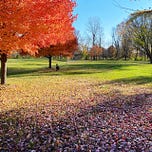




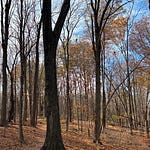

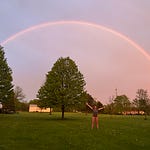
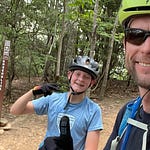
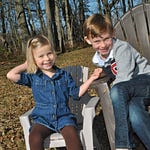
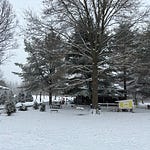
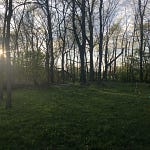
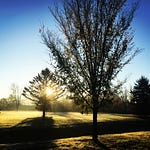
grief season